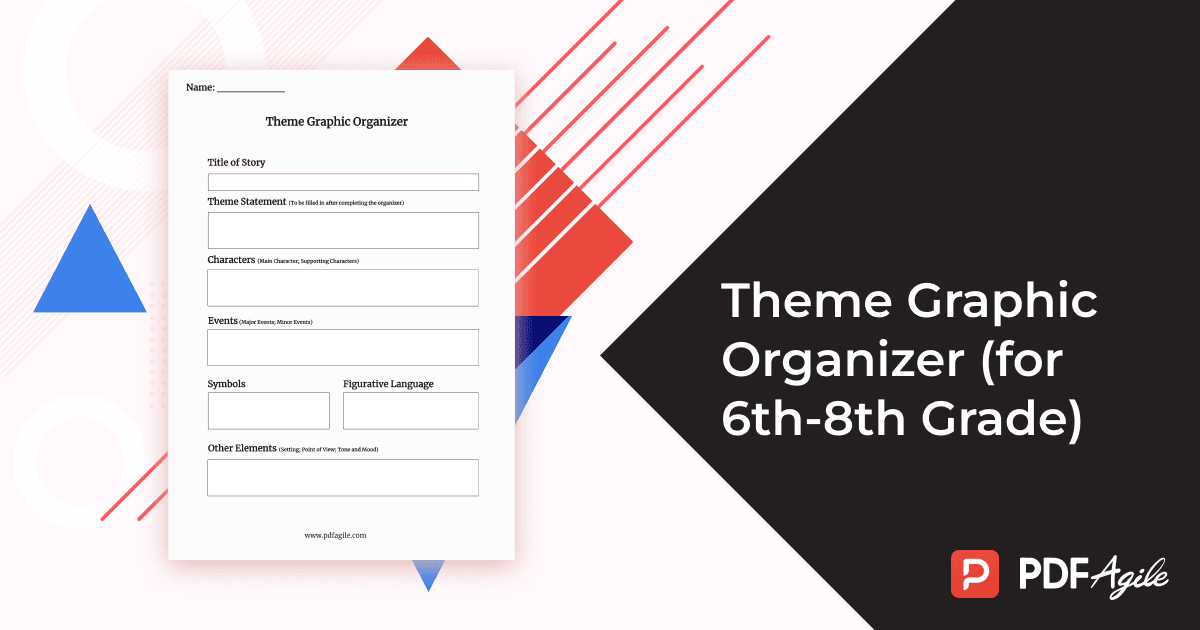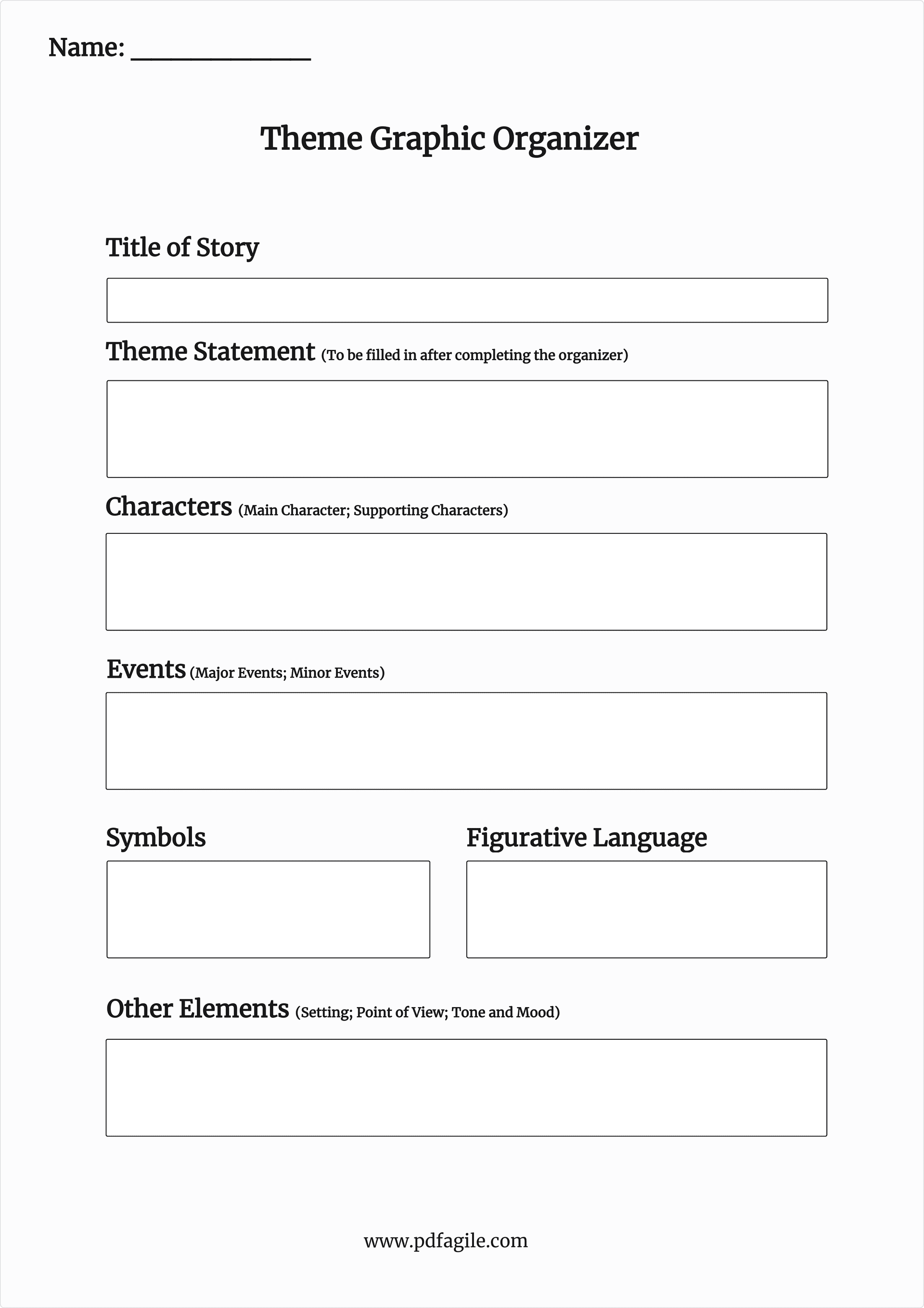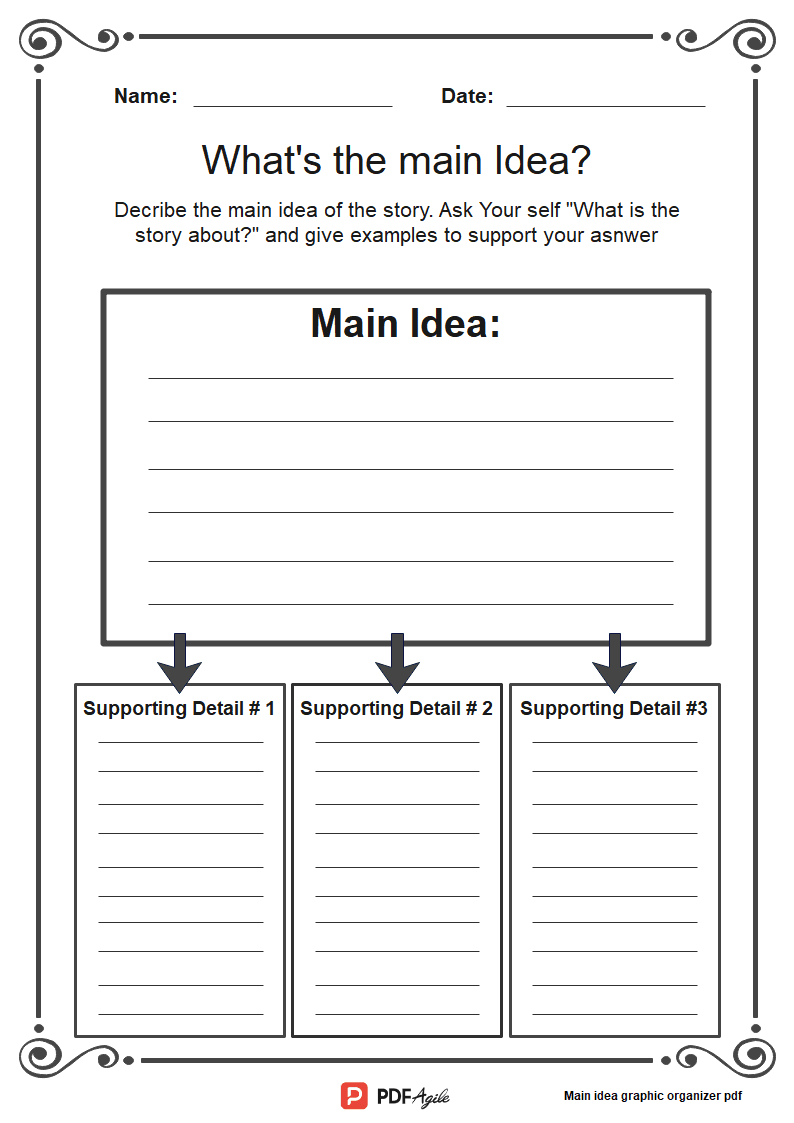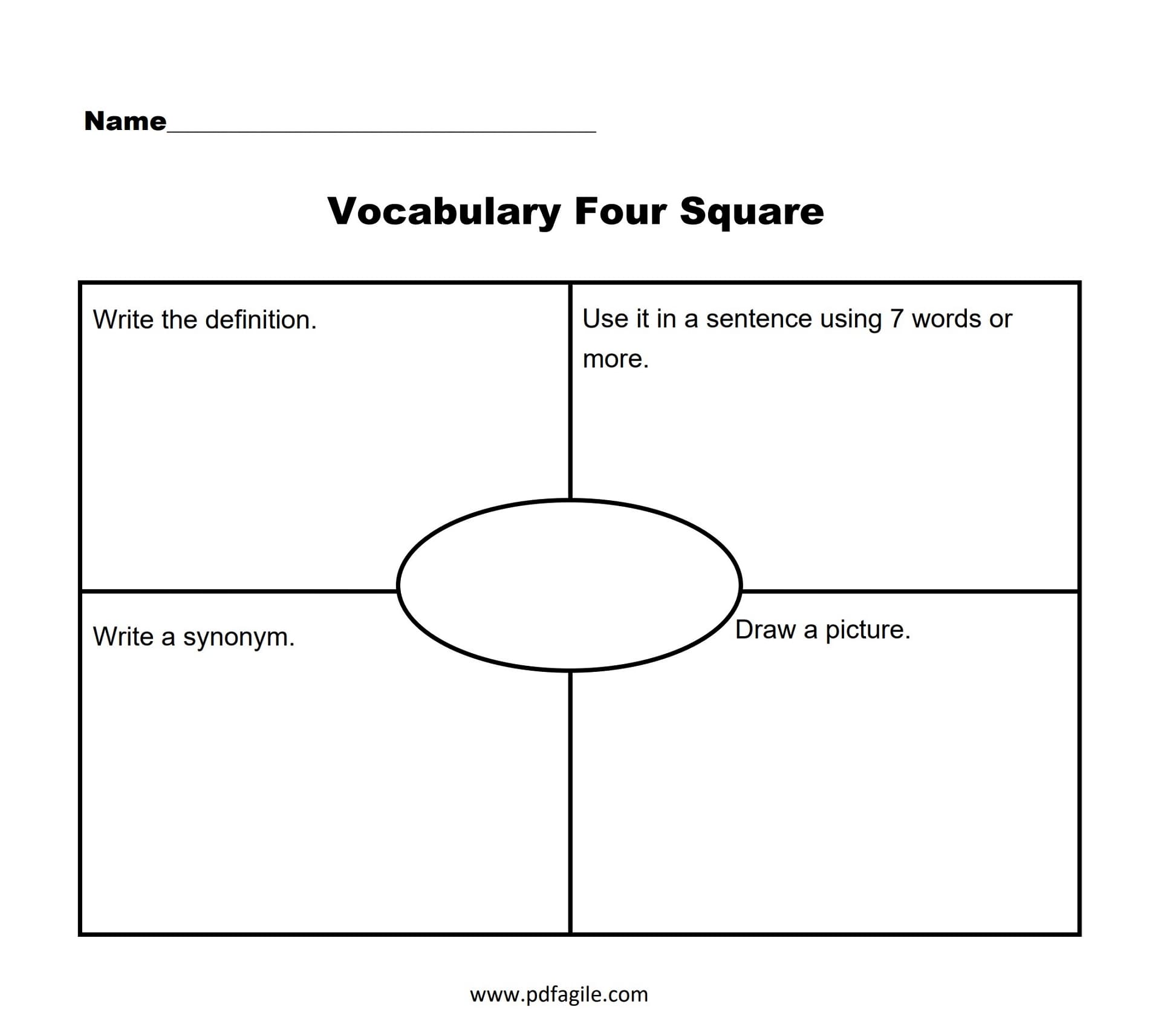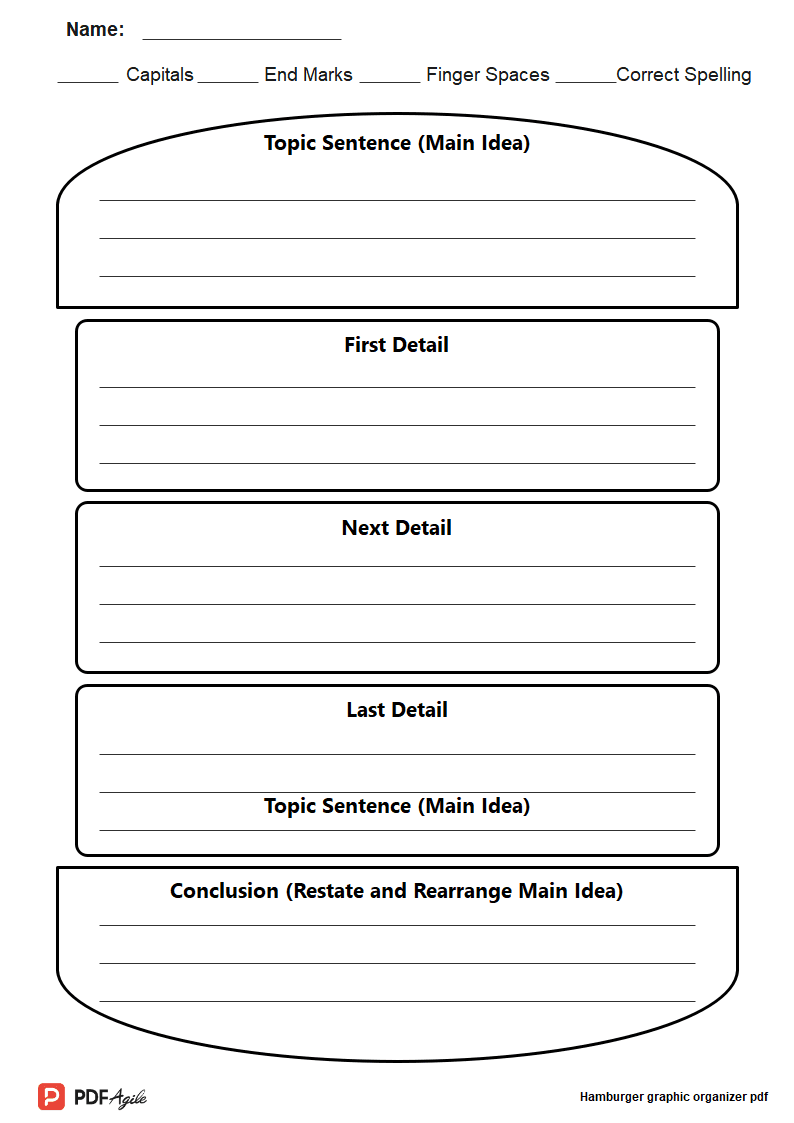In the realm of literature, understanding the theme of a story is paramount to unlocking its true meaning and depth. A theme graphic organizer is an invaluable tool for students in grades 6-8 to visually represent and analyze the central idea or message conveyed by an author.
What is a Theme Graphic Organizer?
A theme graphic organizer is a visual representation of the elements that contribute to the theme of a story. It helps students identify and organize key details, such as characters, events, symbols, and figurative language, to formulate a comprehensive understanding of the author’s intended message.
Benefits of Using a Theme Graphic Organizer:
- Enhances comprehension: By breaking down the complex concept of theme into manageable parts, theme graphic organizers make it easier for students to grasp the central idea of a story. Visualizing the elements that contribute to the theme helps students make connections and see the bigger picture, leading to a deeper understanding of the story’s meaning and message.
- Promotes critical thinking: Identifying and analyzing the story’s elements to determine the theme requires students to engage in critical thinking. They must evaluate the significance of different details and make inferences based on the evidence presented in the text. This process fosters higher-order thinking skills and encourages students to think deeply about the story’s implications.
- Improves writing: A well-crafted theme graphic organizer provides a solid foundation for writing insightful essays and literary analysis assignments. By organizing their thoughts and ideas visually, students can more easily develop a coherent and well-supported argument about the story’s theme. The graphic organizer serves as a roadmap for their writing, ensuring that they stay focused on the central idea and provide relevant evidence to support their claims.
- Supports visual learners: Visual representations cater to students who learn best through diagrams and images, enhancing their understanding of abstract concepts. Theme graphic organizers provide a visual framework that makes it easier for visual learners to grasp the relationships between different elements of the story and how they contribute to the overall theme.
How to Use a Theme Graphic Organizer:
- Read the story carefully: Ensure students have a thorough understanding of the plot, characters, and setting before using the graphic organizer. Encourage them to annotate the text as they read, highlighting important passages and making notes of their initial thoughts and impressions.
- Identify key elements: Guide students to identify the main characters, important events, symbols, and figurative language used in the story. These elements will provide the building blocks for constructing the theme graphic organizer.
- Complete the organizer: Have students complete each section of the graphic organizer, connecting the elements to the central theme. Depending on the specific graphic organizer used, students may be asked to:
- List the key elements and their significance
- Draw connections between the elements using lines or arrows
- Write a brief explanation of how each element contributes to the theme
- Write a theme statement: Based on the completed graphic organizer, students can formulate a concise statement that expresses the theme of the story. The theme statement should be a complete sentence that clearly and accurately reflects the central idea or message conveyed by the author. Encourage students to support their theme statement with specific evidence from the story.
Free Download: Printable Theme Graphic Organizer Template
To assist educators and students, we offer a free, downloadable theme graphic organizer template. This printable resource provides a structured framework for analyzing and representing the theme of any literary work. You can download the template by clicking Use Template button on this page.
